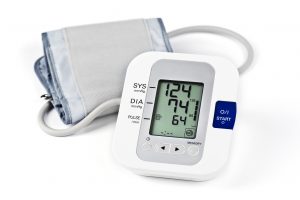In response to direct neurological stimulation from the hypothalamus the posterior pituitary gland releases antidiuretic hormone (ADH, also called vasopressin). ADH regulates salt and water balance. This release can be increased or decreased in response to changes in:
- Blood pressure, detected by baroreceptors
 (volume or pressure receptors) in the heart or large blood vessels, stimulating the hypothalamus through autonomic nerve pathways.
(volume or pressure receptors) in the heart or large blood vessels, stimulating the hypothalamus through autonomic nerve pathways. - Blood pressure, detected in the kidneys, stimulating the hypothalamus through angiotensin transport in blood from kidneys to hypothalamus.
- Blood osmolarity (or concentration), detected by osmoreceptors in the hypothalamus.
Traumatic brain injury (TBI) typically results in shearing forces being applied to the brain arising from movement within the skull. Those areas of the brain lying on the base of the skull are particularly vulnerable. The pituitary gland is adherent to the brain but lies within a bony cavity at the base of the skull (i.e. the pituitary fossa) and it is thus particularly vulnerable to damage following TBI.
Injury to the hypothalamus and/or pituitary can occur through damage arising from:
- Shearing injuries within the hypothalamus.
- Shearing injuries to nerve pathways linking hypothalamus to the pituitary stalk.
- Secondary ischaemia as a consequence of pressure effects created by oedema of the pituitary gland.
Hypothalamic or pituitary injury can result in a variety of endocrine impairments. While most of these cases tend to present relatively late after injury or they may have subclinical presentations, those relating to sodium balance present during the acute phase and often have the potential to result in severe illness.
Depending on the site of injury, sodium and water balance can be affected by:
- Insufficient ADH (antidiuretic hormone) release resulting in Diabetes Insipidus which leads to high sodium levels in the blood (i.e. hypernatraemia).
- Excessive ADH release or Syndrome of Inappropriate ADH (SIADH) resulting in low sodium levels in the blood (i.e. hyponatraemia).
- Cerebral Salt-Wasting: the mechanism for this is unclear but it is attributed to an imbalance in renal sensitivity arising either from increased sympathetic nervous system activity or the release of natriuretic factors (e.g. brain natriuretic peptide or urodilatin) from the injured brain. This also leads to low sodium levels in the blood (i.e. hyponatraemia).
Of these conditions SIADH is the one most commonly experienced in early stages following brain injury. However consider the possibility that, although SIADH, Diabetes Insipidus and Cerebral Salt-Wasting can be caused by brain injury, they can also all arise from a variety of other causes including intracranial surgery, tumours, inflammatory and vascular conditions. Some medications or extracranial conditions can also lead to SIADH syndromes.
Hyponatraemia following Brain Injury
Syndrome of Inappropriate Antidiuretic Hormone (SIADH)
Cerebral Salt-Wasting Syndrome
Diabetes Insipidus & Hypernatraemia